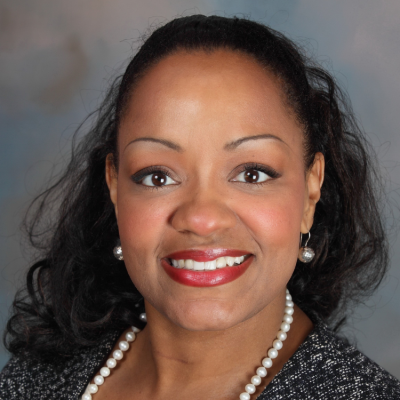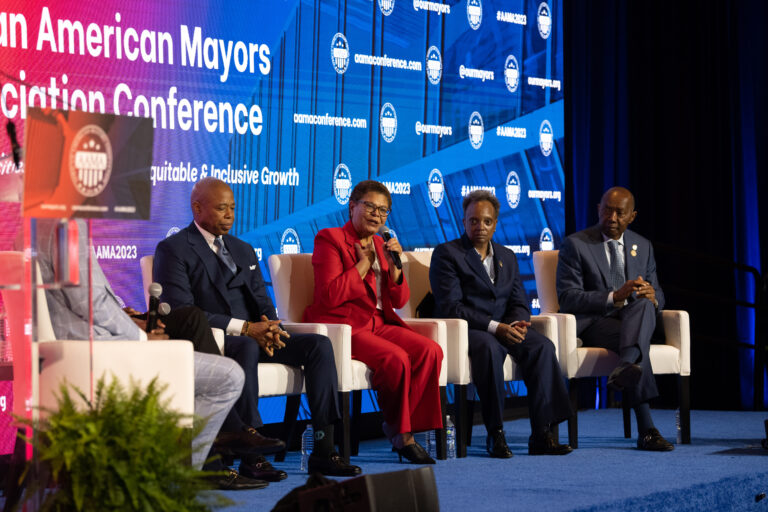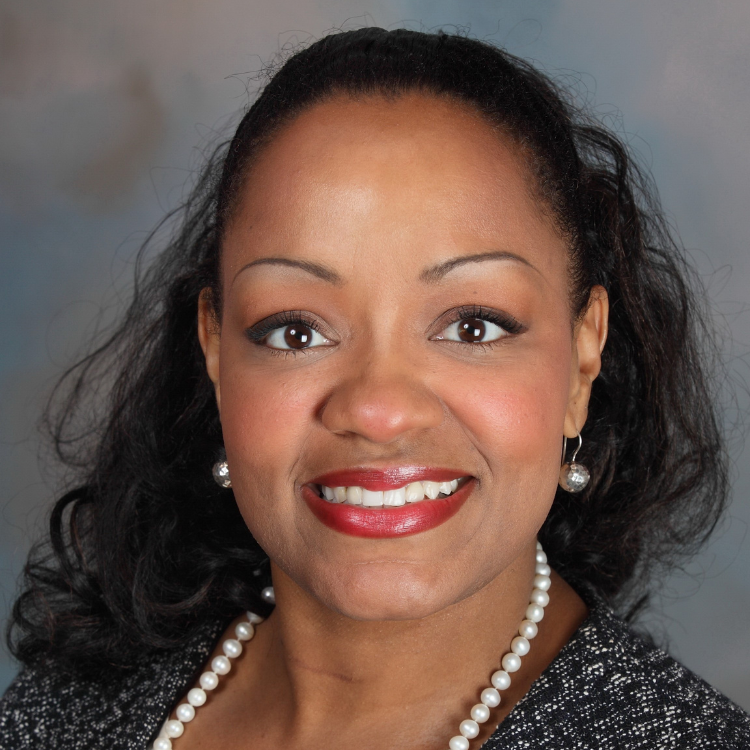Stacie Fujii knows firsthand that the path from a problem to a solution is not always a straight line.
Historic federal funding – including from the Inflation Reduction Act, the Infrastructure Investment and Jobs Act, and Justice 40 – has created a tremendous opportunity to take climate action and address emerging climate threats.
It is essential that this funding gets to the communities that need it most, and that takes time, diligence and robust support across all sectors and at every level of government.
With a background in law and experience working at the federal, state and local levels of government, Stacie is well-versed in the often-messy process of making policy and accessing funding, and she understands the importance of building coalitions to drive advocacy goals.

Now, she is working to connect mayors directly to transformative opportunities through a fellowship with the African American Mayors Association (AAMA), which represents more than 500 Black mayors from communities across the United States.
Many of these mayors gathered in Washington, DC last month at the AAMA Annual Conference, including the “Big 4” mayors (New York City Mayor Eric Adams, Los Angeles Mayor Karen Bass, Chicago Mayor Lori Lightfoot and Houston Mayor Sylvester Turner) as well as the nation’s youngest mayor, Jaylen Smith of Earle, Arkansas, who was elected last year at 18.

“It is critical to identify and foster opportunities to increase mayors’ visibility with higher levels of government,” Fujii said. “My work with AAMA is focused on expanding the climate capacity for mayors, with special attention paid to smaller, rural communities—places where a mayor may not have a staff to seek out grant opportunities or have the technical expertise to apply.
“Often these places miss out on funding and climate resiliency opportunities,” she said. “We’re working to connect AAMA mayors with what they need to offer their municipalities improved infrastructure, clean air and water, and good jobs.”
This interview has been lightly edited for length and clarity.
How do you begin the process of working with mayors toward solutions for environmental challenges facing their communities?
We typically see three different scenarios. First, we may have a city engaged in a long fight with major polluters with national coverage and seasoned but worn fighters. The second scenario is a city that knows there is a problem but is not exactly sure how to address the problem; and the third scenario consists of a town or community that says they don’t have any environmental issues, but after discussing the quality of the water or how the air smells, they realize they do. In each case, all benefit from having an improved support system designated to address environmental issues, as well as the economic realities and health outcomes associated with action or inaction.
We’ve been working to help mayors create safe spaces for conversations and forge paths for viable community-based solutions around their local and regional environmental concerns. We’re hosting a series of mayor roundtables that bring together our mayors, local leaders, institutions of higher learning and non-profit organizations to promote understanding and exchange ideas in a closed-door setting. Through these roundtables, we have been able to equip our mayors with the language to discuss pressing environmental issues, build consensus around solutions and offer technical assistance. Our engagement with mayors includes webinars, agency engagement and exposure to funding opportunities and industry experts. This new level of engagement is valuable and exciting. It’s moving one mayor at a time.
Talk about why creating these spaces for peer-to-peer collaboration and resource sharing can be so valuable for advancing community goals, like reducing pollution and protecting infrastructure.
The passing of the Inflation Reduction Act was just the beginning. We’re trying to make sure that everyone from every community, regardless of the size of that community, can access funding. If community leaders don’t know what money is available, or know that they should be in line, how will the funds reach these communities? It’s important that we work to get some of these underserved communities to the table.
Part of what we’re doing at AAMA is making sure our mayors are included in these conversations, because there’s funding available for pollution reduction and resilient infrastructure projects. Building relationships, developing climate action plans, assessing community needs and helping secure funding through technical assistance supports our mayors and improves the community’s climate resiliency. We are making progress, and that gives us a sense of accomplishment.
The cohort model also provides a space for conversation so mayors can hear from each other and realize a lot of the issues they’re facing are interconnected. What began as an exercise on air pollution led one group to a discussion about how excessive heat is more and more of an issue each year. With hotter days, we see an increase in crime. So we’re working with the Forestry Service on tree-planting, which not only reduces heat, but also is a beautification project that includes workforce development.
Your work through this fellowship is helping to lay the foundation for building co-created solutions on issues like climate change and air pollution. What does this look like in practice?
There’s a push and pull when you think about local sources of pollution in your community. You don’t want an industry to go out of business, because it might be the economic backbone of the community. At the same time, you want to protect the air and water for your kids, your neighbors, and your health. No one wants to breathe crunchy air. A clean and safe environment benefits everyone.
We cannot enter these spaces in a contentious way. We are creating a safe space for mayors and their community leaders to talk and share ideas. We even equip our mayors with toolkits to engage with polluters in a way that is not detrimental to the community. It’s not about taking away jobs or a business. It’s about sitting down and working together toward common goals of a healthy place to live, work and play.
We’re hoping our different style of engagement allows leaders to devise real-time solutions, share information and build new relationships to make their communities stronger.
How can collaboration with mayors help advance environmental justice for communities facing legacies of pollution exposures, especially in the petrochemical corridor?
The first step is building awareness of the problem, and then helping people understand the agency they have. We ask: if you don’t have clean air or water, what does it take for us to get there? Mayors are a bridge from the community to the governor, to federal officials, and can speak directly to leaders and say “this is what my people need.”
Mayors are in the unique position of being able to give authentic, real-time information about how their constituencies are being affected by any number of issues, including pollution. One thing we’ve accomplished through our mayoral roundtables is enabling the exchange of data between cities—it’s hard to address issues of environmental injustice without it.
Collecting the data, analyzing it and sharing can lead to viable solutions to environmental problems. We’re looking to this as a pathway forward that can scale up to other communities as a model for how to deal with similar issues in other parts of the country and eventually the world.
Lexi Ambrogi is a communications manager with Environmental Defense Fund.



